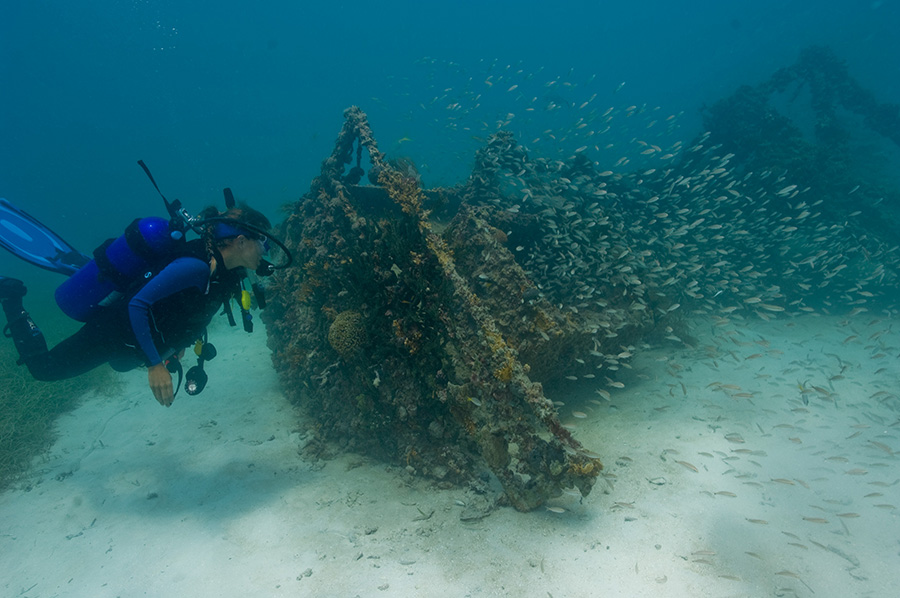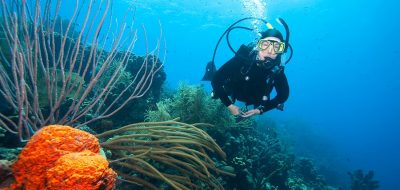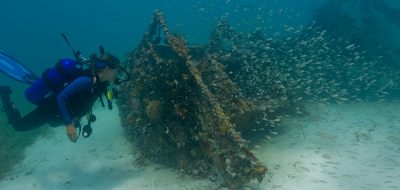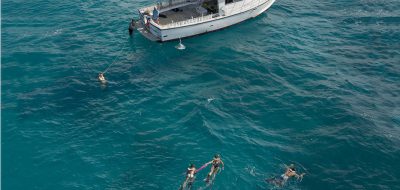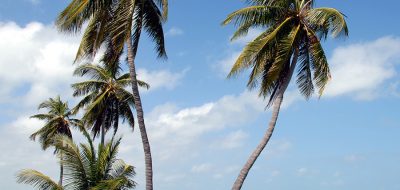Top four scuba diving destinations in Big Pine and Florida’s Lower Keys.
Big Pine Key and Florida’s Lower Keys may be the least developed out of all the Florida Keys, but that’s what makes it special. Natural and untouched, this wild area is where you’ll find an endless array of diverse marine life, the last few strands of living elkhorn coral and the only living coral barrier reef in the continental United States. Thanks to immense sustainability efforts, the Lower Keys continues to be one of the best places in North America for scuba diving.
Scuba diving may seem intimidating if you’ve never done it before, but as an experienced diver, I can tell you it’s pretty easy to pick up. Before your first dive, you’ll complete a short course with a certified instructor and get comfortable using the equipment in shallow water or a pool. Your guide will also stick with you at all times underwater to ensure your comfort and safety.
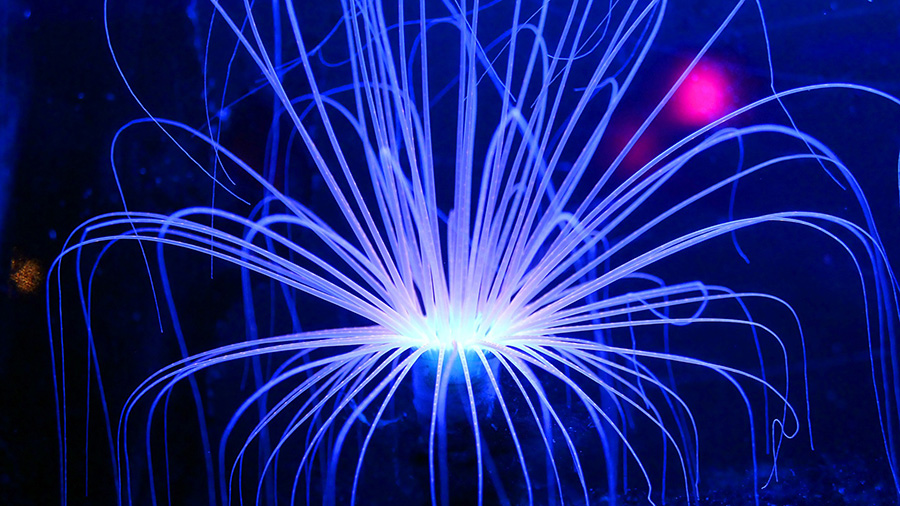
A glowing sea anemone in Dry Tortugas National Park / Photo: NPS
Few experiences are as rewarding as scuba diving, in my opinion. How many other activities out there let you live out your mermaid dreams and come face-to-face with sea creatures you’ve only seen in documentaries? If you’re ready for your own fulfilling underwater adventures, visit these four must-dive spots in Big Pine and Florida’s Lower Keys.
1) Looe Key Marine Sanctuary
You may be surprised to learn that the Lower Keys has the third largest barrier reef in the world. Situated eight nautical miles from Bahia Honda State Park, the Looe Key Marine Sanctuary is a complete reef ecosystem and the only one in the continental USA. It’s famous for steep coral formations which make it easy to spot eagle rays, turtles and tons of tropical fish like sergeant majors and angelfish. If you’re lucky, you may even catch a glimpse of a whale shark or manta ray too. Feeling extra adventurous? Go on a night dive to experience the reef in a completely different way.

A diver explores a sunken ship in the Keys / Photo: Sebastian Pena Lambarri
2) Adolphus Busch Shipwreck
Exploring a shipwreck is on every diver’s bucket list. It’s also something you can do right here in the Lower Keys. Resting seven miles from Big Pine Key and just a stone’s throw away from Looe Key is the Adolphus Busch. This intact 210-foot cargo freighter was intentionally sunk in 1998 to create an artificial reef. Today, it’s an underwater home that’s overflowing with marine life.
Come in the summer to see it completely engulfed in schools of fish. You can also peek inside the portholes to say hello to green moray eels and wander into the cargo holds to meet two resident goliath grouper. Other wildlife you may encounter include stingrays, harmless lemon sharks and horse-eye jacks.
3) Boca Chica Key
You can’t pass up a dive in Boca Chica Key’s Western Sambo Ecological Reserve. It has the largest habitat diversity in the Lower Keys and is one of the few destinations in the area where you can still find elkhorn coral.
The reserve encompasses a nine-square nautical mile area and starts at the Boca Chica Naval Air Station. Jump in from there to see an array of anemones, sea cucumbers, sand dollars and starfish peppered near the shore. Huge hogfish and angelfish are also known to hang out in the shallow areas so keep an eye out as you head deeper into the reserve. At the reef, you can expect to be greeted by vibrant surgeonfish, striped parrotfish, butterfly fish, sharpnose puffers and many other curious residents.
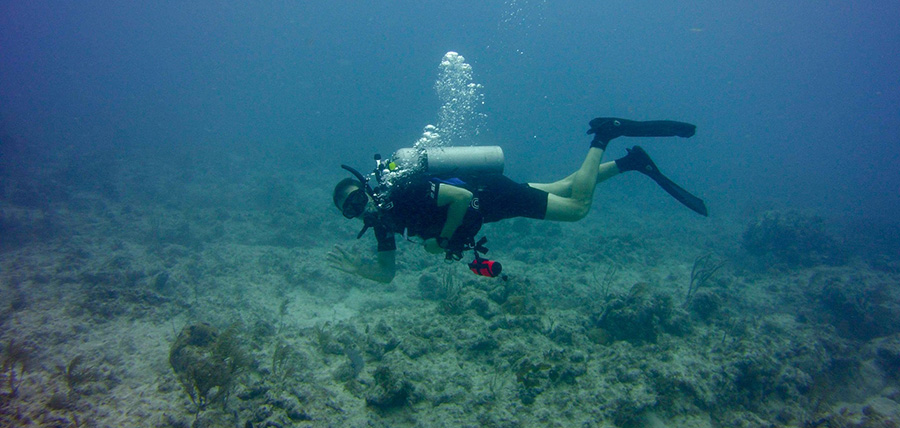
Swimming along the ocean floor around Dry Tortugas National Park / Photo: NPS
4) Dry Tortugas National Park
Dry Tortugas National Park is just a short ferry or seaplane ride from the Lower Keys. The park is more than 99% water making it a wonderland for scuba divers. The most popular site to explore is the Windjammer. This ship sunk on Loggerhead Reef in 1901 and attracts creatures of all sizes so you can expect to encounter everything from 200-pound grouper to teensy reef fish.
Head to Texas Rock if you want to practice your underwater photography. Located north of Garden Key, this area is known for its sprawling coral mound that emerges from the sand. It has almost every species of stony coral which gives you plenty of beautiful subjects to capture. Other top diving locations to check out include the Pulaski Shoals Area, Long Reef Key and Fort Jefferson’s moat wall.
Whether you’re an experienced diver or a complete newbie, you’ll find a few local charters catering to adventurers of all skill levels. The Looe Key Reef Resort and Dive Center and Captain Hook’s Looe Key Reef Adventures provide beginner and refresher lessons as well as guided trips out to the Looe Key Marine Sanctuary and Adolphus Busch shipwreck. Key West companies like Adventure Watersport Charters can bring you to Dry Tortugas National Park for the day. All charters offer advanced courses in case you’d like to get PADI certified and learn to dive on your own.

